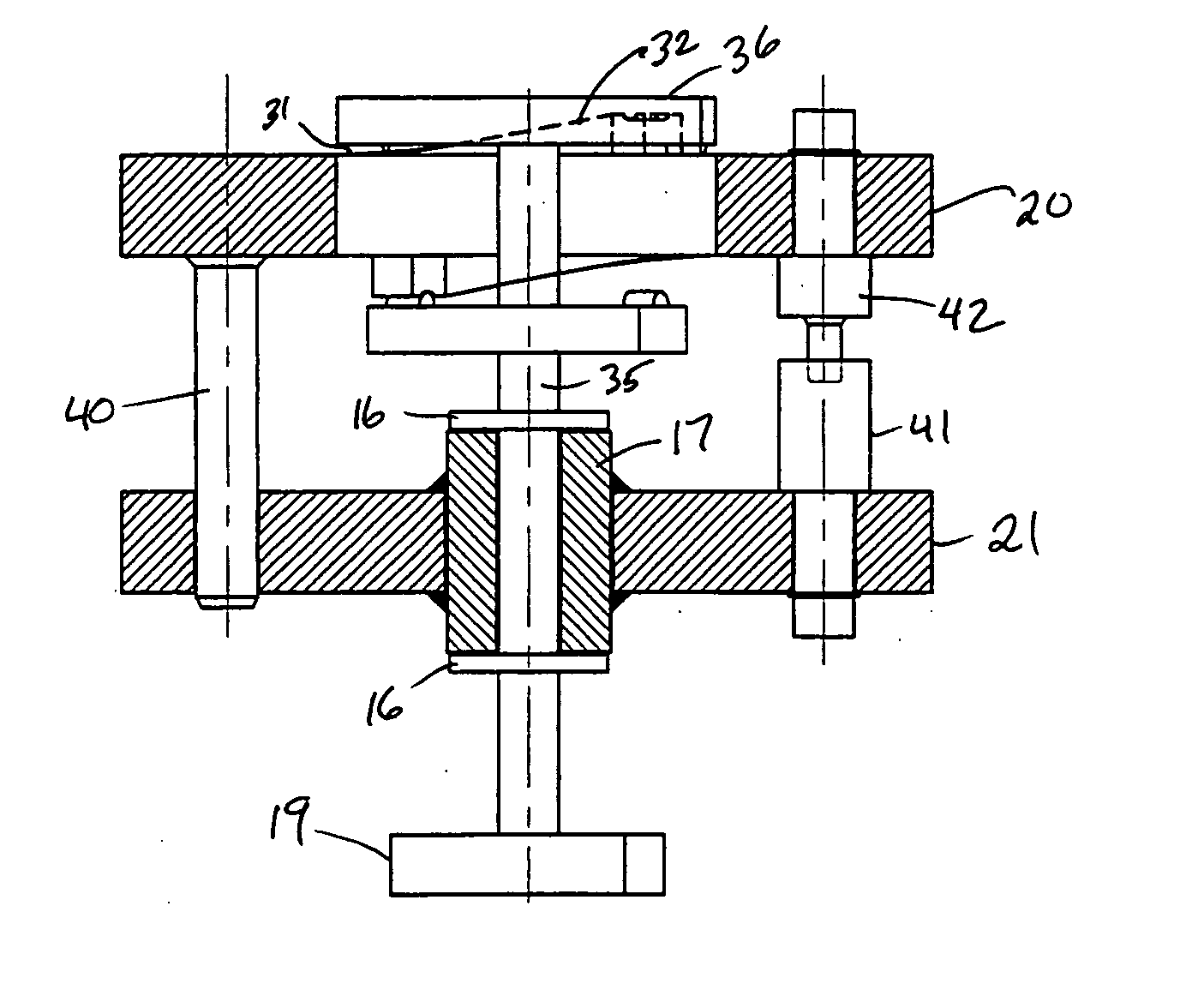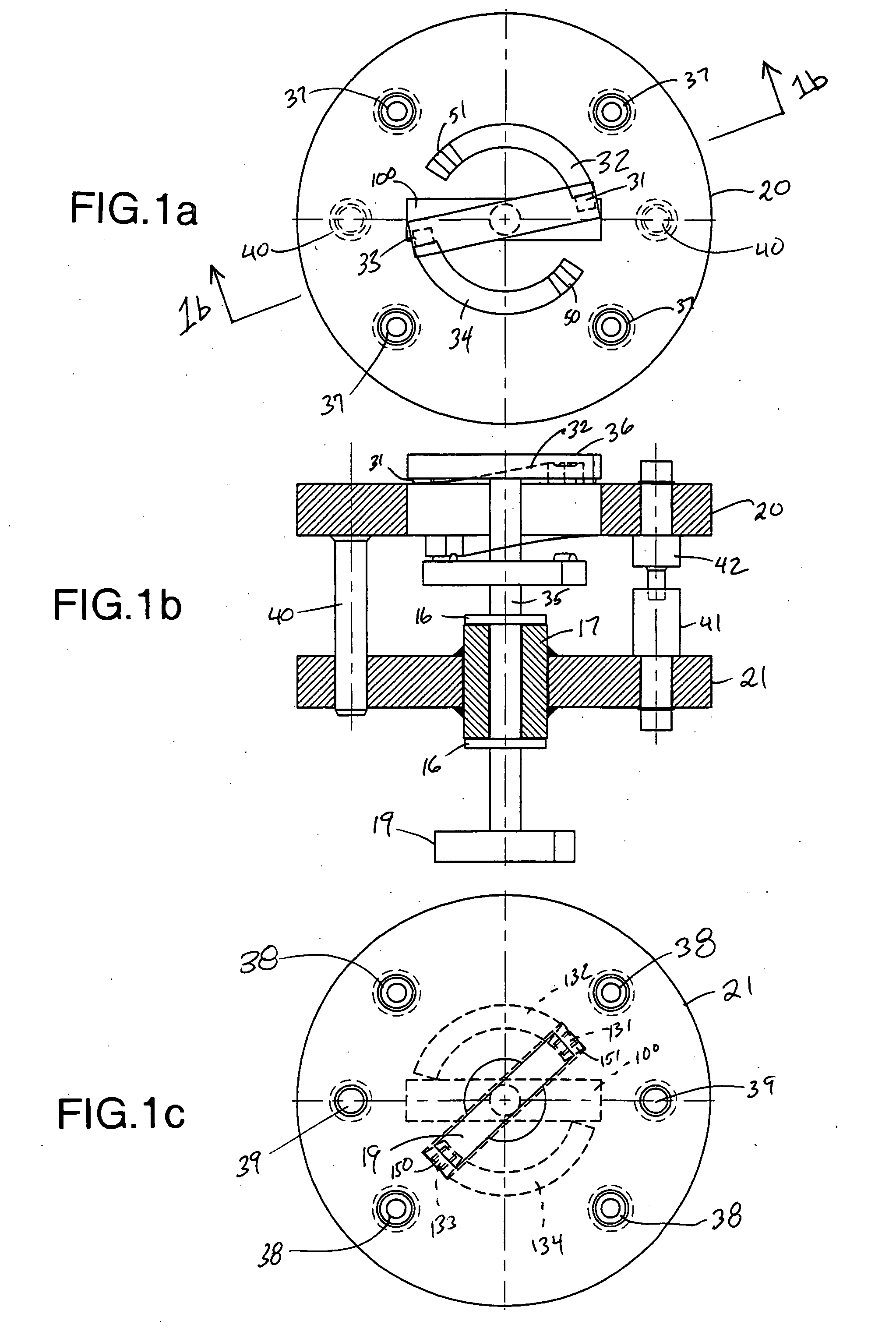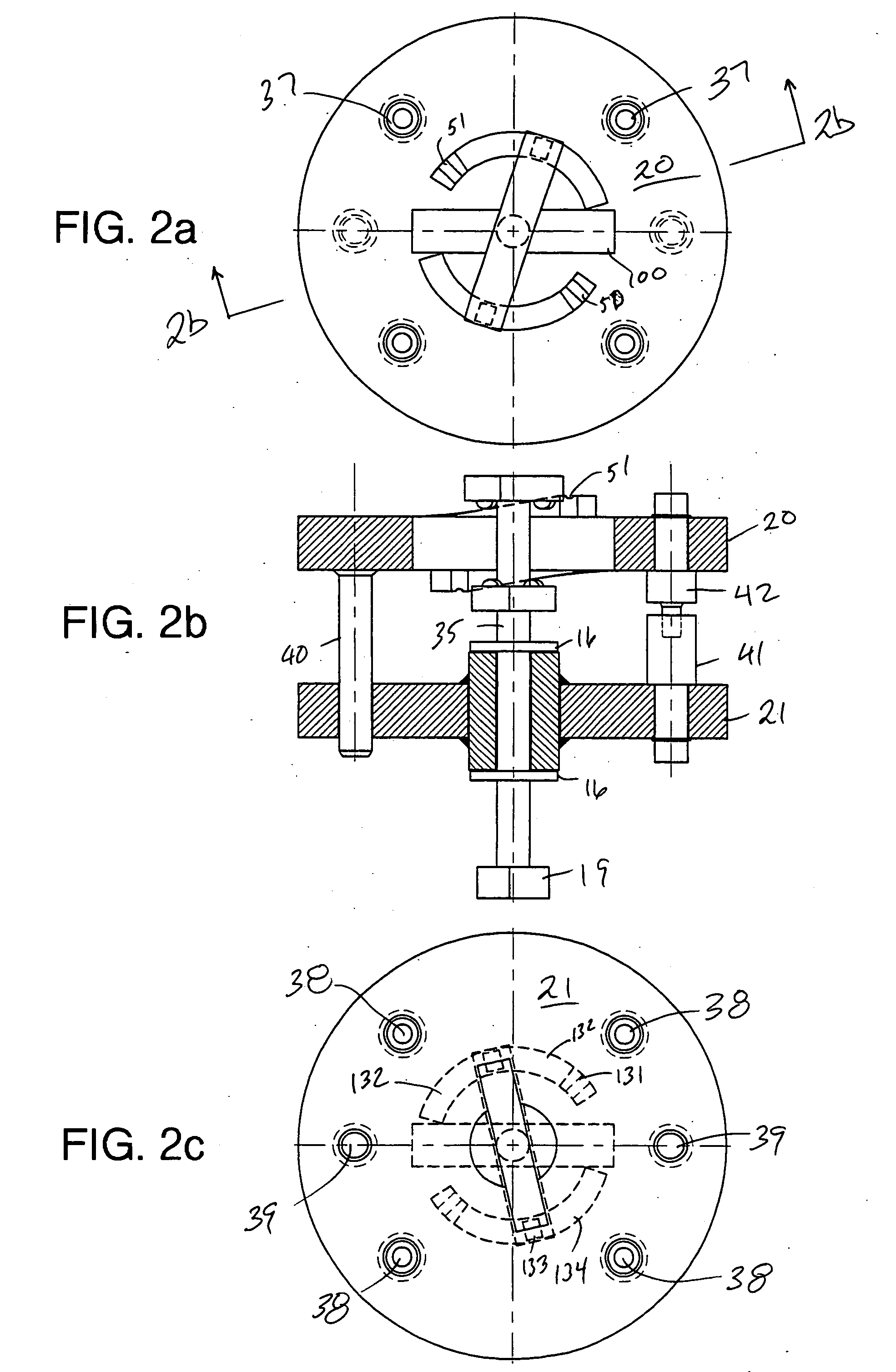Junction plate assembly for undersea hydraulic couplings
- Summary
- Abstract
- Description
- Claims
- Application Information
AI Technical Summary
Benefits of technology
Problems solved by technology
Method used
Image
Examples
Embodiment Construction
[0028] Referring to FIG. 1 of the drawings, a first manifold plate or junction plate 20 is shown having a plurality of cylindrical apertures 37 for connection of male coupling members 42 thereto. Typically, at least two male coupling members are attached to the first junction plate, which is typically the rear junction plate. A male hydraulic line is connected to one end of each male coupling number 42 while the other end of each male coupling member is configured to mate with female coupling member 41 and establish fluid flow therebetween. The second manifold plate or junction plate 21 includes a plurality of cylindrical apertures 38 for connection of female coupling members 41 thereto. In a preferred embodiment, the second manifold plate is the front plate. Various means may be used to connect the male and female coupling members to the junction plates, as is well known in the art.
[0029] One or more guidepins 40 are provided on the first manifold plate 20 to align the two manifol...
PUM
 Login to View More
Login to View More Abstract
Description
Claims
Application Information
 Login to View More
Login to View More - R&D
- Intellectual Property
- Life Sciences
- Materials
- Tech Scout
- Unparalleled Data Quality
- Higher Quality Content
- 60% Fewer Hallucinations
Browse by: Latest US Patents, China's latest patents, Technical Efficacy Thesaurus, Application Domain, Technology Topic, Popular Technical Reports.
© 2025 PatSnap. All rights reserved.Legal|Privacy policy|Modern Slavery Act Transparency Statement|Sitemap|About US| Contact US: help@patsnap.com



